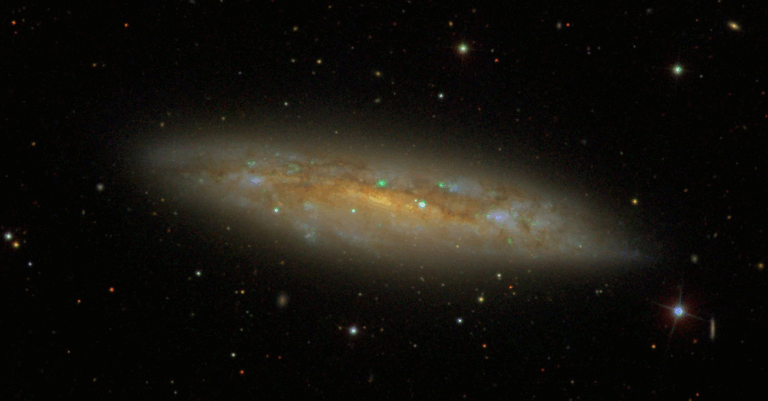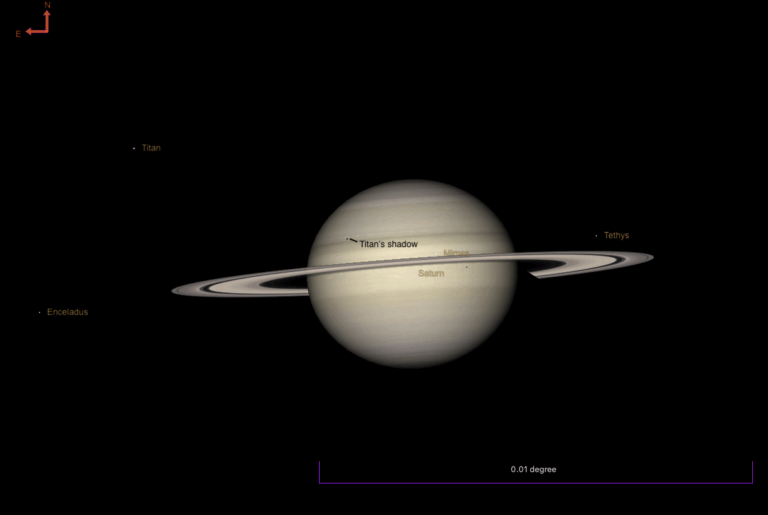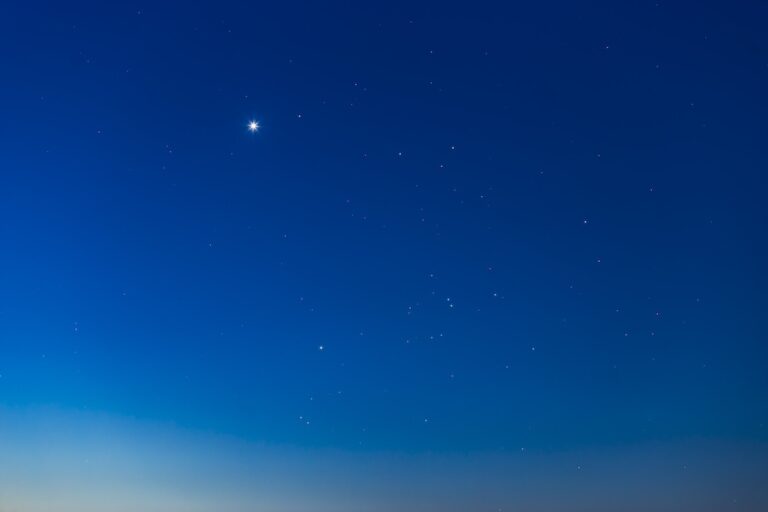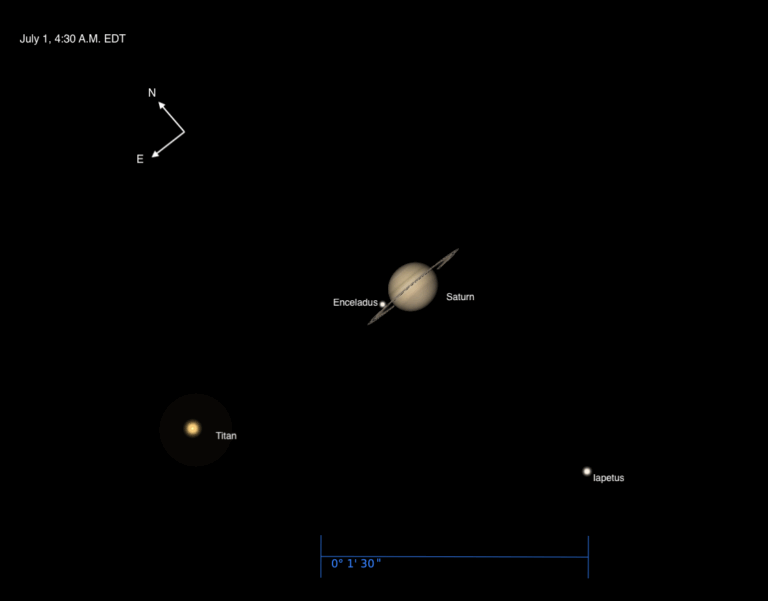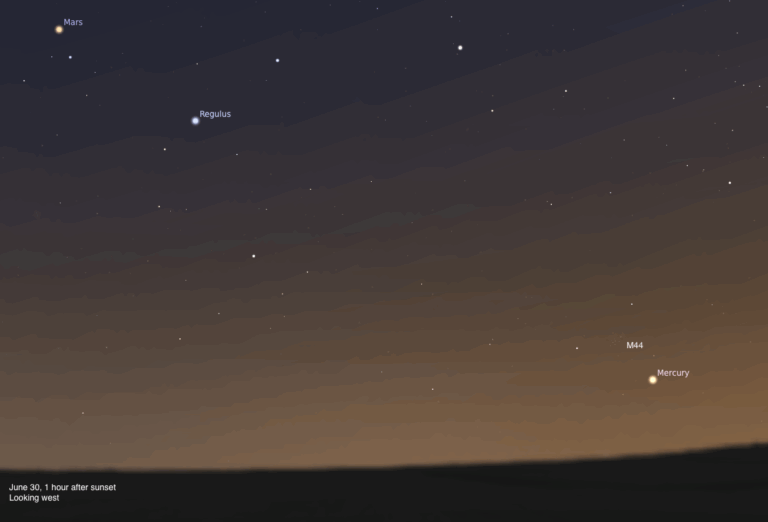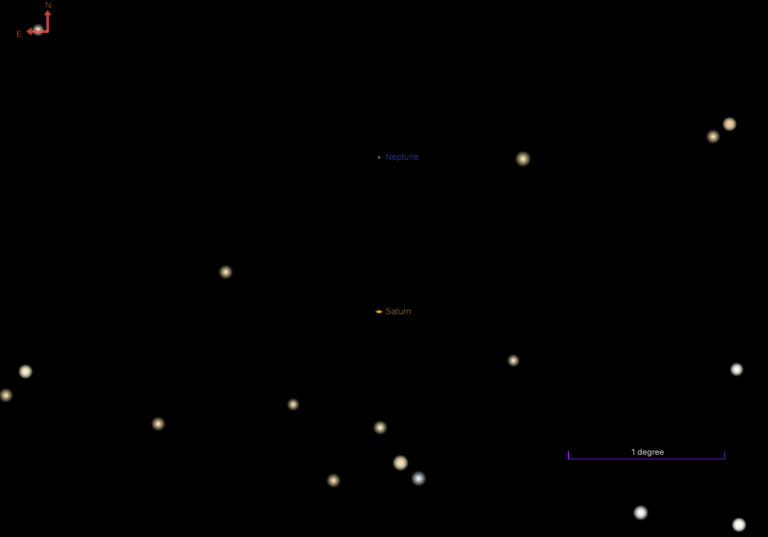Let’s begin with a real eye-catcher, the red star Mu (μ) Cephei. Mu is south of the midway point between Alderamin (Alpha [α] Cephei) and Zeta (ζ) Cephei, which form the “floor” of the house.
After viewing Mu in 1783, William Herschel described it as “a very fine deep garnet colour . . . and a most beautiful object, especially if we look for some time at a white star before we turn our telescope to it, such as Alpha Cephei, which is near at hand.” This captivating description later resulted in Mu’s popular nickname, “Herschel’s Garnet Star.”
Mu Cephei is one of the largest and most luminous red supergiants in our galaxy. Were Mu placed in the center of our solar system, the star’s edge would extend nearly to Saturn’s orbit. To enjoy its vivid red color fully, follow Herschel’s advice by viewing Alderamin first before turning to Mu. Their color contrast should then be immediately obvious.
Photographs show that IC 1396 sits within a huge emission nebula resembling the Rosette Nebula (NGC 2237-9). Unfortunately, the nebula’s deep red color makes spotting it extremely difficult. North Carolinian Tom Lorenzin reported success, however, after he taped two narrowband nebula filters to the eyepieces of his binoculars. Try it if you can and let me know your results!
After visiting IC 1396, head east to Zeta at Cepheus’ southeast corner. Zeta is the brightest star in a kite-shaped asterism that includes Lambda (λ), Epsilon (ε), and Delta (δ) Cephei. When British astronomer John Goodricke discovered in 1784 that Delta was a variable star, he could not have imagined the impact his discovery would have on the size of our universe. Delta is a Cepheid variable, a special type of star that astronomers use to estimate vast distances within the Milky Way as well as to other galaxies. Delta varies from magnitude 3.5 to 4.4 over a cycle lasting 5 days, 8 hours, and 47 minutes.
Now let your attention wander north to NGC 7160, a bright small cluster about halfway between Alderamin and Delta, and a bit higher in the sky. NGC 7160’s brightest star, a blue giant, shines at magnitude 7. Two others — one magnitude 8, the other nearly 9 — form a tiny isosceles triangle with the blue giant through 10x binoculars. The rest of the five-dozen cluster stars blur into a nebulous glow.
NGC 7160 belongs to a large stream of young stars known as the Cepheus OB2 Association. You can see the association naked-eye on dark autumn nights as a conspicuous band of starlight branching off from the main stream of the Milky Way in northeastern Cygnus and flowing into southern Cepheus.
See something interesting through your binoculars? I’d love to hear about it. E-mail me through the magazine’s web site. Until next month, when we pay a call on Cassiopeia, remember that two eyes are better than one.



